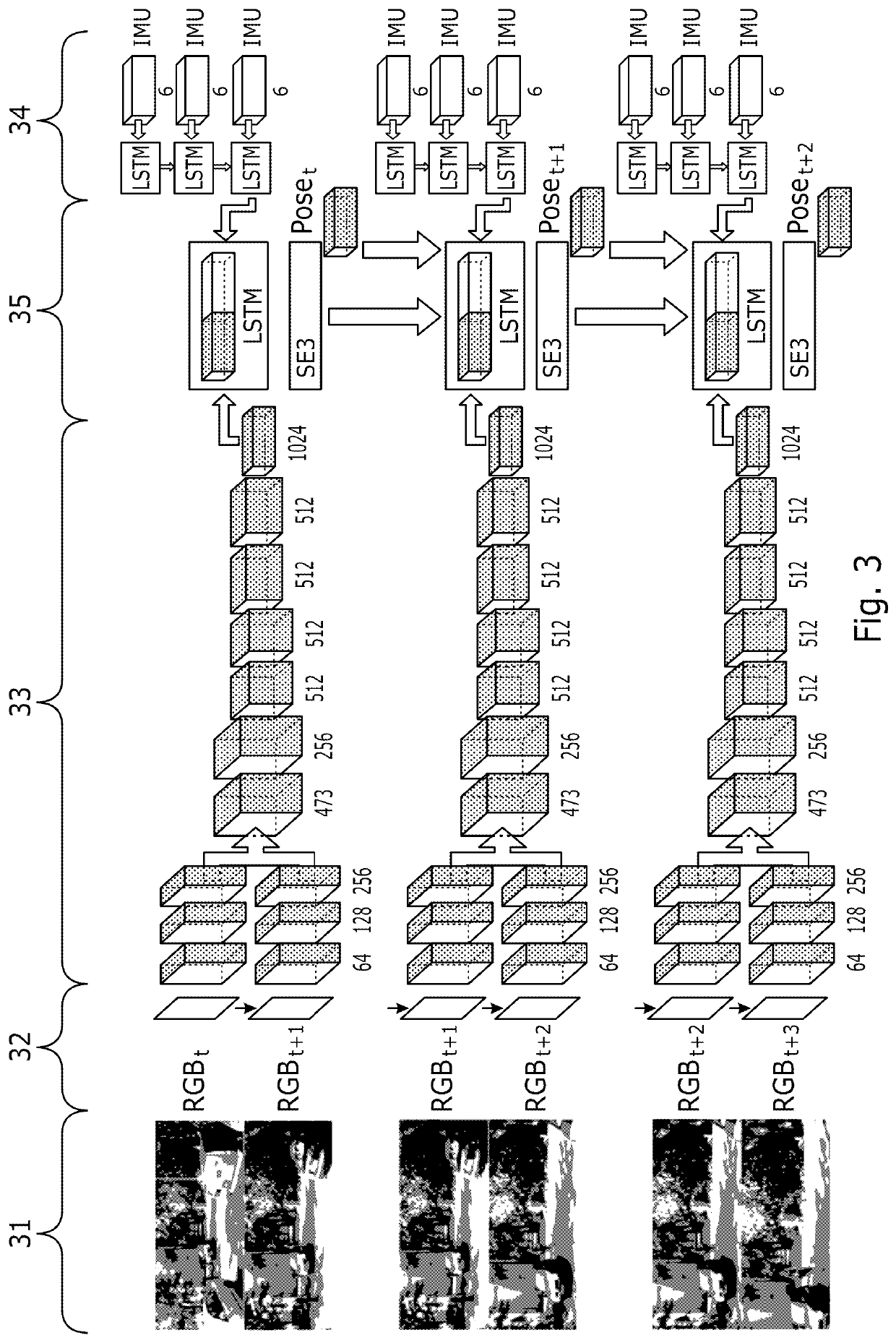Determining the location of a mobile device
a mobile device and location technology, applied in the direction of image enhancement, process and machine control, instruments, etc., can solve the problems of not being able to estimate scale, i.e. actual distance travelled, and require very precise camera calibration, etc., to achieve the effect of maximising correlation and maximising correlation
- Summary
- Abstract
- Description
- Claims
- Application Information
AI Technical Summary
Benefits of technology
Problems solved by technology
Method used
Image
Examples
Embodiment Construction
[0056]A schematic diagram of an autonomous robot in accordance with an embodiment of the invention is shown in FIG. 1. The autonomous robot 1 comprises a processor 2. It will be appreciated that in different embodiments the processor 2 may be a single processor system, a dual processor system, or any other suitable processor system. The processor 2 is in communication with a camera 3, a inertial sensor 5, and a memory 4 which stores (amongst other things) images captured by the camera 3 and motion data captured by the inertial sensor 5.
[0057]The inertial sensor 5 may be a gyroscope, accelerometer, magnetometer or any other suitable inertial sensor, or indeed a combination of such devices.
[0058]The operation of the autonomous robot 1 to determine its location is now described with reference to the flowchart of FIG. 2. The process is also shown schematically in FIG. 3. At each time step the autonomous robot 1 determines its location based on the information currently available to it. ...
PUM
 Login to View More
Login to View More Abstract
Description
Claims
Application Information
 Login to View More
Login to View More - R&D
- Intellectual Property
- Life Sciences
- Materials
- Tech Scout
- Unparalleled Data Quality
- Higher Quality Content
- 60% Fewer Hallucinations
Browse by: Latest US Patents, China's latest patents, Technical Efficacy Thesaurus, Application Domain, Technology Topic, Popular Technical Reports.
© 2025 PatSnap. All rights reserved.Legal|Privacy policy|Modern Slavery Act Transparency Statement|Sitemap|About US| Contact US: help@patsnap.com



